Significant finds from excavation of Dahan Cemetery from Eastern Zhou Dynasty in Shandong
Dahan Cemetery is situated in Tengzhou, Zaozhuang City, Shandong Province. From April to May in 2017, archaeological prospection of the cemetery was conducted jointly by Shandong Provincial Institute of Cultural Relics and Archaeology and Tengzhou Museum, covering about 7000 square meters. 70 tombs were discovered. From October 2017 to January 2018, middle and east parts of the cemetery were excavated. 52 tombs were unearthed during this excavation. Among them, 38 are small-sized tombs, 13 are large-sized or medium-sized tombs and 1 is unfinished tomb.
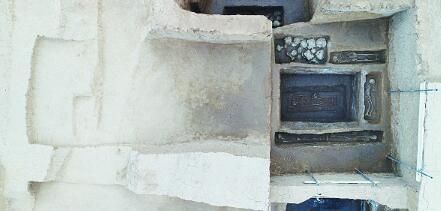
Large sized tombs M39 of Warring States period.
Small-sized tombs
All small-sized tombs haven’t been looted. Only 1 tomb is from Qing Dynasty (M35), the rest are all from late period of Warring States period. They are all earthen shaft pit tombs and rectangular in plane. Some of them have a waist pit. Most of the tombs have an inner coffin, only a few have an inner coffin and an outer coffin. All the deceased are lying on their backs with straight limbs, mostly heading north and only a few heading east, west or south. There are relatively few funeral gifts. Only a few of pottery pots with ring foot, small jars or pots with ring foot, plates, yi-wine vessels were found in niches of several tombs. Jade or stone artifacts were discovered in mouths of some tomb owners. Besides, there were bronze belt hooks and agate rings in certain tombs.
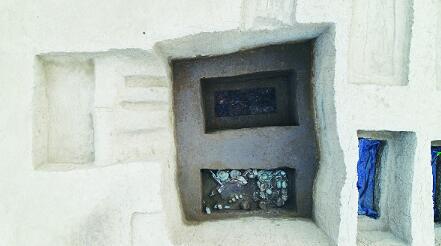
Large sized tombs M39 of Spring-Autumn period.

Large sized tombs M39 of Spring-Autumn period.
Large or medium sized tombs
According to characteristics of times, large and medium-sized tombs can be divided into two groups, one from Spring-autumn period and the other from Warring States period.
All tombs from Spring-autumn period are from late phase of Spring-autumn period. Some of them have been looted. There are 3 kinds of tombs during this period based on forms of their tomb passages. The first kinds have no tomb passage. The second are tombs with a plane of “甲” character’s shape and an east-west short and small tomb passage. The third are also “甲” shaped tombs with an east-west tomb passage, however, the passages are a little bit longer. Tombs in this period all have a chamber for outer coffin and a box for burial goods. Sometimes, coffin chamber located in the south, box located in the north, vice versa. All tombs have an outer coffin and an inner coffin. Skeletons are all lying on their backs, heading east. There is some cinnabar being placed around tomb owners. In the boxes, there are usually bronze artifacts, such as tripod-ding, dou-vessels with a high stand, dui grain-receptacles, lei-vessels, plates, yi-vessels, sets of bells with buttons, swords, daggers, arrowheads and so on. Besides, there are some painted pottery vessels.
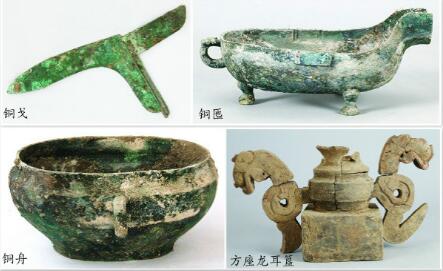
Tombs from Warring States are all large-sized tombs. Some have been looted. Tombs from this period have relatively deep tomb chamber and long tomb passage. Many of them have a plane in the shape of character “甲” with a tomb passage, or a plane in the shape of character “刀”. Tomb passages of “甲” shaped tombs usually turn to one side. Moreover, only a few tombs in the plane of character “刀” have an cambered tomb passage. Tomb chamber could be divided into outer coffin room and burial gift box. If coffin room is in the south, burial gift box ix in the north, vice versa. Burials usually have an inner coffin and two outer coffins. Human skeletons are lying on their backs with straight limbs, heading east. Around tomb owners, there is always cinnabar. In burial goods box, there are bronze artifacts, including tripod-ding, fu grain-receptacles, dou serving-vessels with a long stand and a cover, dui-vessels, zhou-plates, lei-vessels, pi-broad and thin arrowheads, plates, yi-vessels and etc. Besides, there are potteries, some of which are painted.
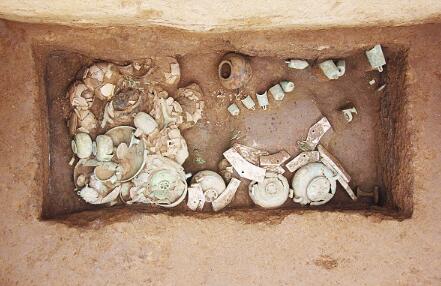
Burial goods box in M43
Besides large, medium and small-sized tombs, there is an unfinished tomb, M38. In this tomb, there is a gradually narrowed slope from tomb chamber to tomb passage. In the west, there is a second-tiered platform, but no coffin chamber. This might mean construction of the tomb was stopped when digging grave.
More than 800 pieces of cultural relics have been unearthed from excavation of middle and east parts of the cemetery, ranging from bronze artifacts, jade artifacts, stone artifacts, potteries and so on. Among them, bronze artifacts not only have elegant patterns, but also show several casting techniques. Painted potteries have several kinds of decorated patterns. Small-sized tombs dated back to the end of Warring States period according to analysis in terms of form and structure of tombs, assemblage and their morphological evolution and etc. As for large and medium-sized tombs, some belong to late phase of Spring-autumn period, others belong to early, middle and late period of Warring States period. Based on layout of cemetery, although burials from different periods could be broken each other, tombs from the same period almost never be broken each other. This may show the cemetery was always in order plan through times, so it’s probably been organized. What’s more, there were relatively many joint-burials for couples whenever in late phase of Spring-Autumn period or Warring States period.

Bronze bell found in M50
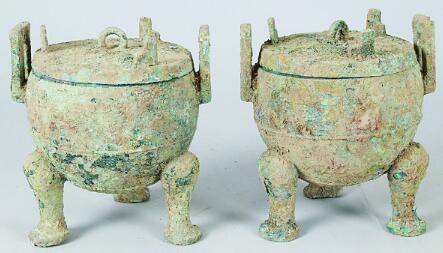
Bronze tripod-ding found in M44
According to analytical results of burial custom, tomb size, large and medium-sized tombs should belong to aristocrats, while small-sized tombs are almost burials for ordinary people.
In this excavation zone, during Spring-autumn period, it’s popular to have a waist pit and sacrificed dog in tombs. But during Warring States period, human beings were usually sacrificed. Through all the periods, there were animal bones being found from artifact boxes, which might relate to burial practices that animal meat was put in artifact box at that time. Judging from the funeral customs and characteristics of buried bronze artifacts and potteries, There are many similarities and differences between Dahan Cemetery and cultures of Lu State, Teng State, Xue State, Zhu State and so on around the cemetery according to analysis on burial practices. And there are also cultural elements of Wu, Yue and Chu being recognized from a couple of tombs, which means close cultural relationships might exist among Dahan Cemetery, Wu (State), Yue (State) and Chu (State). After all, cultural elements of remains from this cemetery are complicated, so nature of the cemetery could be figured out with discovery of inscriptions on bronze vessels in future and further research on related documents. (Translator: Ma Huanhuan)

